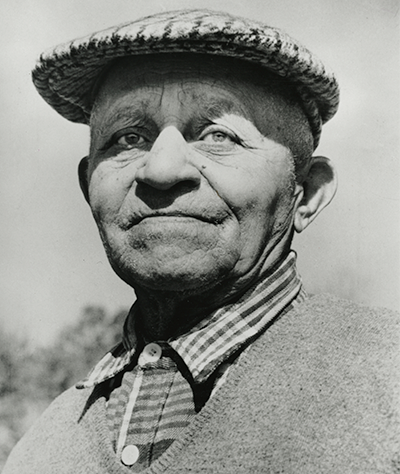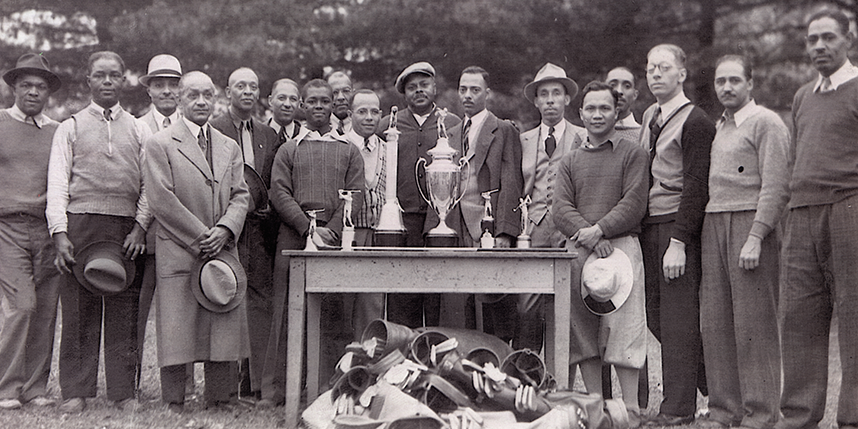As part of a collaborative initiative by the USGA, The Country Club and Town of Brookline to advance a dialogue on inclusion in golf, the USGA Golf Museum and Library debuted a fan exhibit at the 2022 U.S. Open Championship that showcased legends who broke down barriers to participation in the game.
Titled “Hard-Earned Glory,” the exhibit celebrates golf’s unifying power by connecting fans to powerful stories brought to life through photographs, digital highlights and 50 significant artifacts from the archives of the USGA Museum. The exhibit presents a broad timeline of key milestones in golf that mirror broader cultural movements through American history, from women’s rights to civil rights, accessibility to the LGBTQ+ revolution.
.Exhibit highlights include:
- Club made and used by John Shippen (pictured, right) the first American golf professional and the first African American to compete in a U.S. Open (1896)

- Mashie niblick used by Francis Ouimet, 1913 U.S. Open
- A selection of United Golfers Association trophies, ca. 1920-1975
- Putter and headcover used in the 1948 U.S. Open by Ted Rhodes, whose entry in the 1948 U.S. Open marked a critical milestone in the history of golf and civil rights
- “42” headcover used by Jackie Robinson, matching the baseball pioneer’s uniform number, ca. 1950
- Miniature U.S. Women’s Open trophy awarded to Mickey Wright, 1964 U.S. Women’s Open
- Golf ball used in the 2006 U.S. Open by Tadd Fujikawa, who made history at age 15 as the youngest U.S. Open qualifier, and later the first male professional golfer to come out as gay
- Hat worn by Mel Reid, 2021 U.S. Women’s Open
- Trophies from the U.S. Adaptive Open, the USGA’s national championship for players with disabilities, which will debut in July at Pinehurst Resort & Country Club
“There is no greater opportunity than our biggest platform, the U.S. Open, to celebrate golf’s most inspiring stories and introduce new individuals to our game,” said Mike Whan, USGA CEO. “Ensuring a more unified, accessible and inclusive game is critically important for the future of our great game.”
